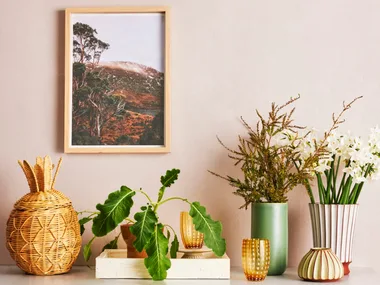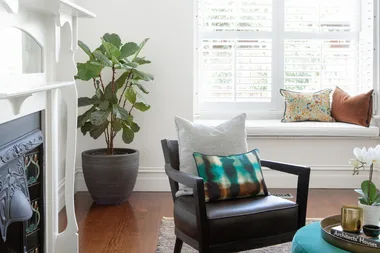Few indoor plants have garnered the kind of popularity in the last decade quite like the Monstera (Monstera deliciosa). Its only worthy competitor is perhaps the fiddle leaf fig, but when it comes to care and maintenance, monsteras (also known as ‘Swiss cheese plants’) definitely win out. The low-maintenance indoor plant, which is native to the jungles of Southern Mexico and Guatemala is beloved for its large, holey leaves and climbing habit.
Despite its meteoric spike in popularity, the monstera has a long history. In its native homeland, its roots have been used to make rope, baskets and even treat ailments including snakebites and arthritis. It was first cultivated as a houseplant in England during the 1700s. French painter Henri Matisse’s studio in the late 1940s was home to several extra large monstera plants, the leaves of which may have inspired his later decoupage works, including La Gerbe (1953). During the 1970s, monsteras were commonly used as decorative plants in homes, and it is perhaps the recent revival of 70s inspired design that the plant has regained favour.
Did you know? In the wild, or when cultivated in a greenhouse, monstera plants produce fruit that tastes much like a pineapple or jackfruit! Monsteras are unlikely to flower and produce fruit when grown indoors.

Where to position a monstera
Monstera plants prefer a warm spot away from direct sunlight.
How often to water a monstera
Let the top 4cm of soil dry out between watering as over watering may lead to root rot, signs of this are yellowing or wilting leaves. For best results Monsteras should enjoy conditions that are fairly moist so avoid artificial heating and cooling, they will require monthly feeding in spring and summer when planted in containers.
You can also mist the monstera occasionally to increase the humidity of the room.

Should you prune monstera’s aerial roots?
Monsteras produce aerial roots that allow the plant to climb. For a clean look, you can trim the aerial roots using a clean, sharp knife, however it is not necessary to do so.
Should you put monstera’s aerial roots in water?
Plants will do better if the aerial roots that grow from the main stem can be directed into a container of water from which supplies will be drawn for the plant, thus reducing the need for too frequent watering of the mixture in the pot.

How to repot a monstera plant
When the time comes to move the plant into a larger pot, select a potting mix comprised of equal parts potting mixture and sphagnum moss. If the plant reaches a height of more than 80cm, it will need the support of a moss pole or bamboo cane.
Are monsteras toxic?
Monsteras contain a chemical compound that can irritate the mouth and digestive tract if ingested. Cats and dogs may also experience dermatitis if they rub directly against the plant. It is best kept out of reach of children and pets.






